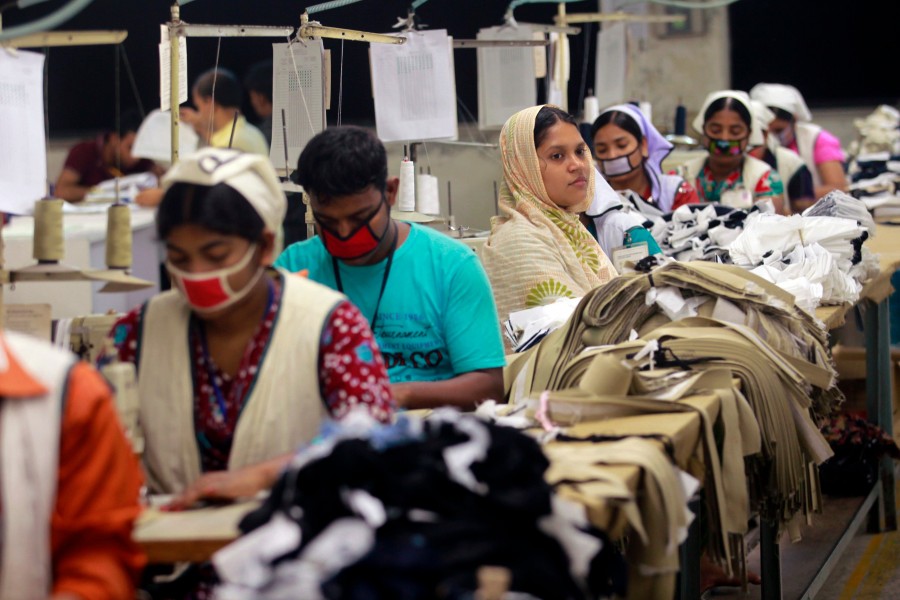The country's readymade garment (RMG) factories are shifting to cash payments from digital wage disbursement, despite higher benefits of digitisation, according to a new survey.
Factories had not completely replaced cash payments with the digital transfer as they were not fully aware of the benefits of digitisation, it said explaining the reasons.
The other reasons included workers' unwillingness to receive wage digitally due to its high transaction costs, their insufficient knowledge about mobile financial and banking services.
South Asian Network of Economic Modeling (SANEM) disclosed the findings on Sunday after its analysis of monthly data collected during April-October to study the "Factory Wage digitisation Trends" in Bangladesh.
SANEM's study was conducted under its project titled "Garment Worker Diaries" that aimed to collect data on the working conditions, income, expenditure, and financial tool uses of workers in the global apparel and textile supply chain.
The project is currently being led by Microfinance Opportunities in Bangladesh and the SANEM.
The study was done through phone interviews with a total of 1,377 workers, over three-quarters of whom were women, from factories in the five main industrial areas such as Chattagram, Dhaka, Gazipur, Narayanganj, and Savar, according to a statement.
"Despite the high benefits of digitisation, including decreased payroll processing costs and enhanced security associated with digital payments, factories are reverting to cash payments," the report said.
The government's stimulus package given to pay four months' workers wages beginning from April stimulated the digitisation process in factories.
It found a massive shift towards paying workers digitally in May, followed by a slow decline in the share of digital payments in the subsequent months.
However, there was a considerable difference in the behaviour of factories on an individual level: some were digitised before May, some digitised temporarily while others never digitised.
The study divided the factories into two categories: "Brand-facing" and 'Not-brand facing'.
A factory is categorised as "Brand-facing" if it is listed on any brand's supplier list or is listed as a supplier to a brand on the "Mapped in Bangladesh" or "Open Apparel Registry" websites.
Factories that are "Brand-Facing" were more likely to have been paying their workers digitally before May 2020.
Furthermore, "Brand-facing" factories that had been paying workers in cash before April were more likely to switch from cash to digital payment methods between April and May.
In last April, some 20 per cent of non-brand factories and 37 per cent of "Brand-Facing" factories were paying workers digitally while in May 2020, the percentages increased sharply to 57 per cent and 85 per cent respectively.
The proportion of factories paying digitally reached its peak of 60 per cent in June and started to decline thereafter for factories not affiliated with a brand.
The proportion declined from 60 per cent in June to 54 per cent in July and went further down to 45 per cent in August.
On the other hand, for "Brand-Facing" factories, the highest proportion of factories paying digitally was recorded at 87 per cent in July, which declined to 76 per cent in August.
By September 2020, only 40 per cent of Not Brand-Facing factories and 73 per cent of Brand-Facing factories were still paying workers digitally, noted the study.


